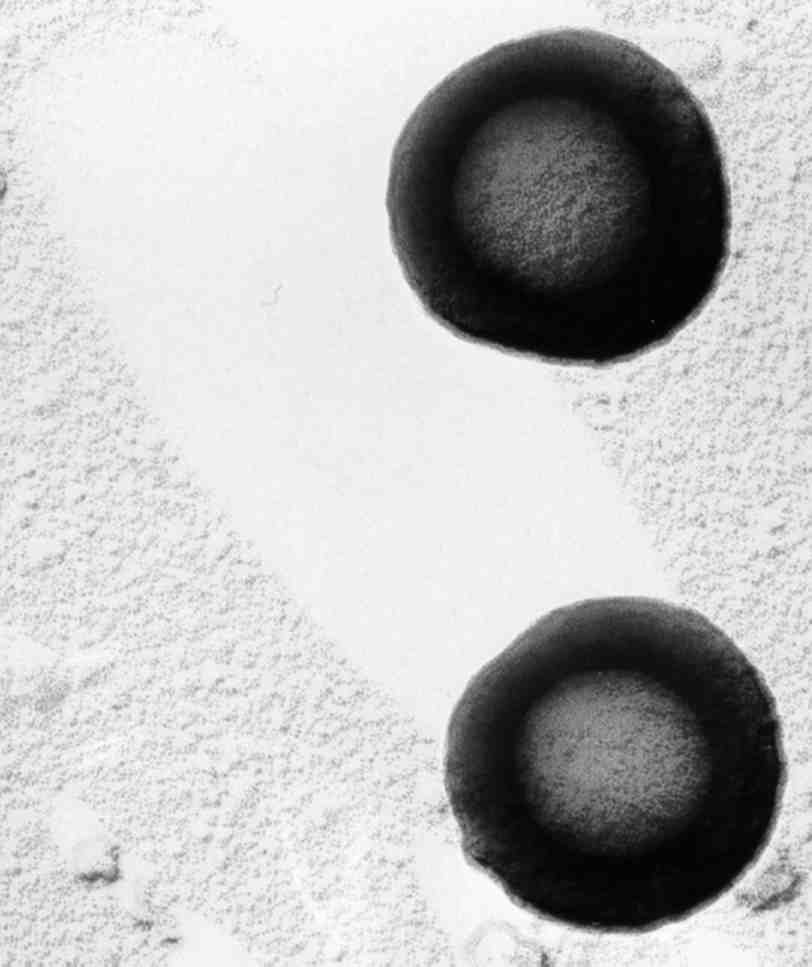Core-shell colloids
With dynamic light scattering one can study the collective dynamics of highly concentrated dispersions of crosslinked polystyrene colloids in 2-ethylnaphthalene (isorefractive to polystyrene (PS)). For studying the dynamics of single particles in concentrated dispersions one needs an optically visible tracer. These tracers are core-shell colloids which cores have a different refractive index as PS. The shell is made of crosslinked PS, so the tracers have the same interaction potential as the host colloids. In order to obtain a core-shell morphology the polymer of the shell should not mix with the polymer of the core. So we first synthesize highly crosslinked poly(t-butylacrylate) colloids with a surfactant free emulsion polymerization process ("batch"-condition). The high crosslinking reduces the mobility of polymer segments. In a second step we  polymerize the shell material onto the core particle. As a side reaction, the shell polymer can build new homogeneous particles (secondary nucleation). If the number density of the seed particles is high enough and the feed rate of the second monomer is slow, we can suppress the secondary nucleation. One has to choose a feed rate at which monomer can polymerize completely before the next amount of monomer is added ("starved-feed"-condition).
polymerize the shell material onto the core particle. As a side reaction, the shell polymer can build new homogeneous particles (secondary nucleation). If the number density of the seed particles is high enough and the feed rate of the second monomer is slow, we can suppress the secondary nucleation. One has to choose a feed rate at which monomer can polymerize completely before the next amount of monomer is added ("starved-feed"-condition).
The picture shows the transmission electron microscopy photo of the tracer. The core-shell morphology is clearly seen in this picture. The polymer of the core appears brighter as the polystyrene shell. The interface between core and shell is very sharp and there are no involvements of PS in the core. The morphology can also be studied by analysis of form factors.
 polymerize the shell material onto the core particle. As a side reaction, the shell polymer can build new homogeneous particles (secondary nucleation). If the number density of the seed particles is high enough and the feed rate of the second monomer is slow, we can suppress the secondary nucleation. One has to choose a feed rate at which monomer can polymerize completely before the next amount of monomer is added ("starved-feed"-condition).
polymerize the shell material onto the core particle. As a side reaction, the shell polymer can build new homogeneous particles (secondary nucleation). If the number density of the seed particles is high enough and the feed rate of the second monomer is slow, we can suppress the secondary nucleation. One has to choose a feed rate at which monomer can polymerize completely before the next amount of monomer is added ("starved-feed"-condition).The picture shows the transmission electron microscopy photo of the tracer. The core-shell morphology is clearly seen in this picture. The polymer of the core appears brighter as the polystyrene shell. The interface between core and shell is very sharp and there are no involvements of PS in the core. The morphology can also be studied by analysis of form factors.

